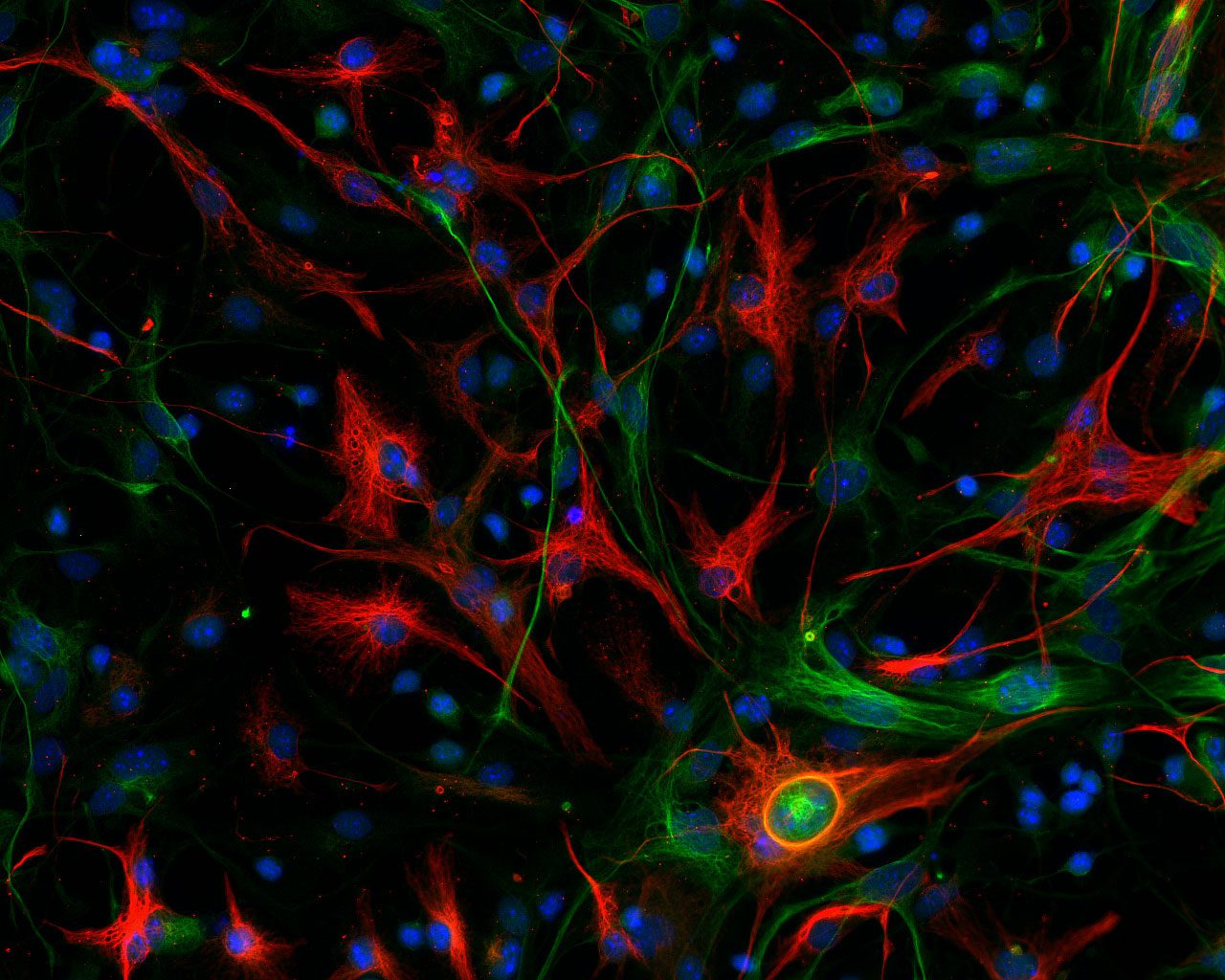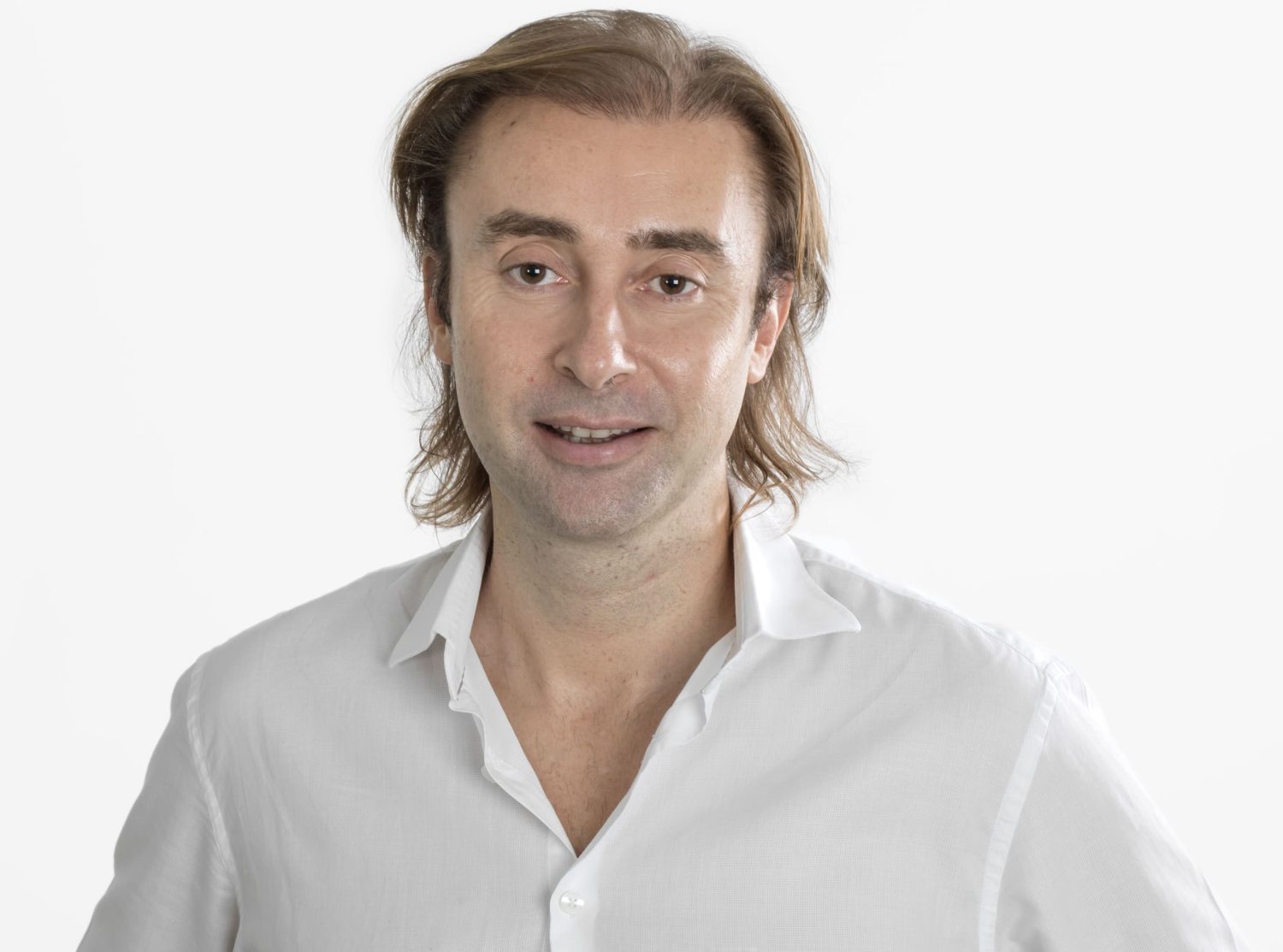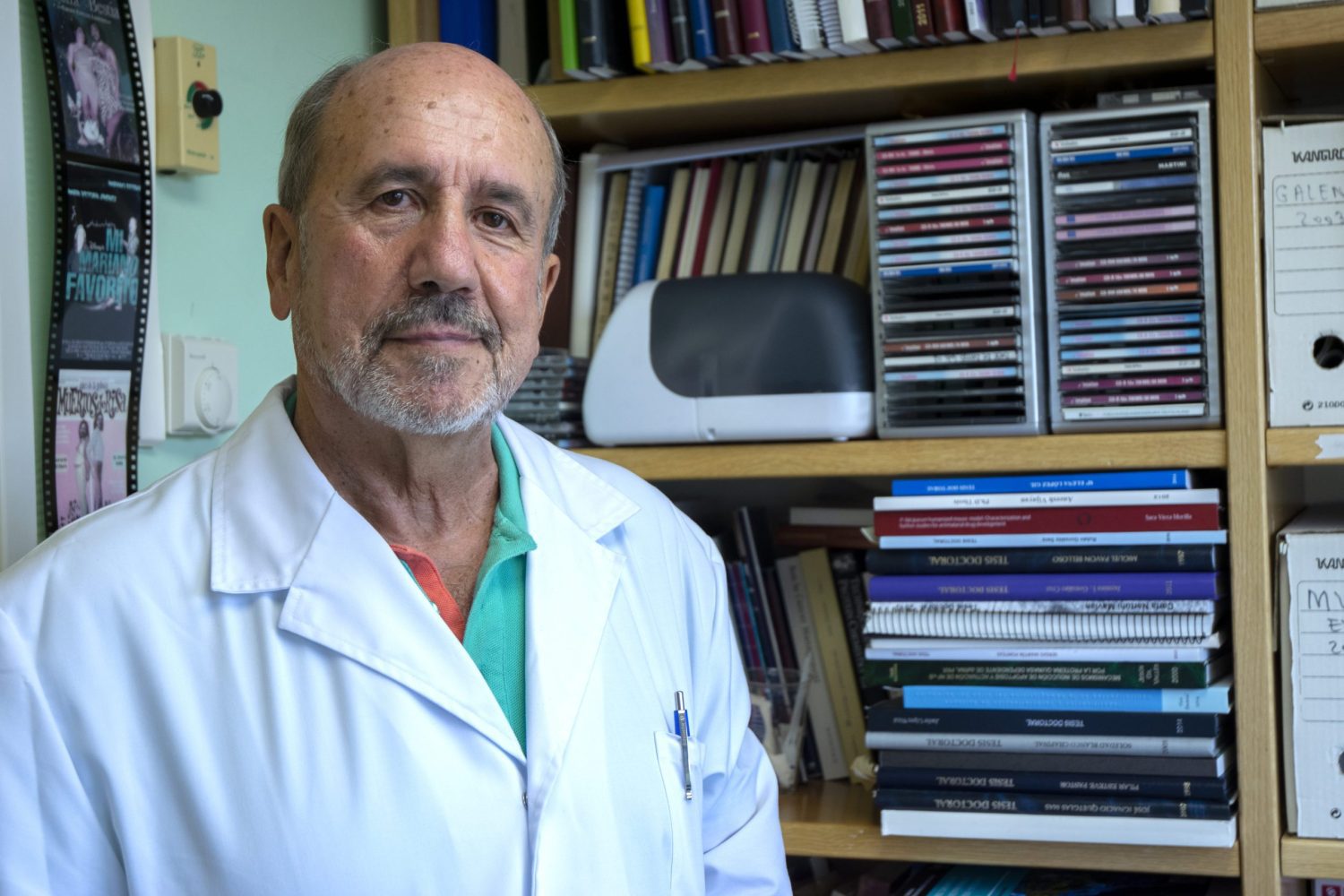This website uses cookies so that we can provide you with the best user experience possible. Cookie information is stored in your browser and performs functions such as recognising you when you return to our website and helping our team to understand which sections of the website you find most interesting and useful.
COLUMN
Dear Friends,
Our first newsletter of this new academic year, after the summer, is jam packed with the important and successful activities we have been running in recent months, which we are particularly proud to tell you all about in this latest edition. In the section on Scientific News, you will also be able to read about two new discoveries that are moving us closer to improving the diagnosis and treatment of cancer.
One of the most important dates in our calendar is the 24th of September, International Cancer Research Day, where we also run a conference aimed at members of the general public and pay special attention to our CNIO Friends. This year, the conference, which I had the honour of chairing, looked at COVID-19 Vaccines and Controlling Cancer, and it featured contributions from, among others, immunologists Mariano Esteban and Margarita del Val, as well as CNIO Friend, Sergio Recio.
Mariano Esteban’s talk highlighted the role that new technologies against Covid-19 will play from now on, helping to accelerate immunotherapies and vaccines against cancer. Among other issues, he also stressed the need for cancer research to influence other fields, such as immunotherapy, as well as the involvement of microbiota in cancer. Our friend Sergio Recio pointed out the efforts scientists are making to improve people’s lives, and he and the other participants all called on society to become more engaged and involved in supporting cancer research. I, for one, am truly grateful for his words.
As well as this important congress, on the evening of the 24th of September, 350 cities around Europe celebrated the European Researchers’ Night, an EU initiative to highlight the importance of scientific knowledge. Here at the CNIO, we hosted a virtual meeting entitled Meet the scientists, be a scientist, in which more than 300 people participated, including many children. The aim of this event was to awaken a vocation for science among children, to fight stereotypes associated with people who go into research, and to show people what cancer research entails here at the CNIO. It was a resounding success, even beating last year’s record participation numbers.
I would also like to take this opportunity, as we mark World Breast Cancer Day this month, to send all my love to all those women and men who have been diagnosed with any type of breast cancer, and to all those whose friends or loved ones have been diagnosed. Here at the CNIO, we are constantly researching to beat these kinds of tumours, as we demonstrated when we promoted studies into BRCA1 and BRCA2 in Spain, and when we detected the first prognosis indicators for the most aggressive form of breast cancer: triple negative. These investigations are headed up in our centre by Miguel Ángel Quintela, who is in charge of the Breast Cancer Clinical Research Unit. An interview with Miguel Ángel is included in this latest edition of our newsletter. His greatest challenge is to create a virtual patient model, which will allow clinicians to make clinical decisions based not only on the patient’s genetic load but also on their habits.
As I have stressed on many occasions, we are extremely proud of the scientific progress we are making here at CNIO, and I hope you enjoy reading this latest newsletter. I am so grateful for your support, which is vital to the continuation of many of our projects and progress.
Maria A. Blasco
Director
MEET THE RESEARCHERS, FRIENDS OF CNIO
Sofía Cabezudo
 Sofía Cabezudo / A. Tabernero / CNIO
Sofía Cabezudo / A. Tabernero / CNIO
Throughout my research career, I have taken on some very demanding projects and gained extensive experience in molecular and cellular biology techniques, both in vitro and in vivo. During my PhD, which I completed at CBMSO (Madrid), I studied the importance of cell survival in adaptive signalling pathways. I focused on how Galphaq, a known transducer of the signalling of receptors coupled to G proteins, is a general modulator of autophagy through the mTORC1 axis, to ensure that the supply of vital components adjusts to fluctuating needs. During this period, I was also a visiting researcher in the leading autophagy lab run by Dr Ana María Cuervo (Albert Einstein College of Medicine, New York), where I gained experience in image-based techniques and methodologies to measure autophagy in vivo. What I learned from this experience proved extremely valuable in my first post-doctorate, during which I consolidated a collaborative network and embarked on a new line of research to study autophagy in endothelial and hepatic contexts. Overall, through my PhD and my first post-doc, I forged a solid profile in cellular and molecular biology, and developed my self-management and teamwork skills, which I consider extremely valuable to my continuing growth and maturity as a researcher.
After this period, I felt the need to continue exploring new fields in which I could approach complex biological issues from another angle. In June of 2019, I received an offer from Dr. Óscar Llorca (CNIO) to join his group so that my experience in cellular biology could complement his structural and chemical approaches, providing a bridge that would translate into cancer research. Given my previous awareness of how structural biology, and more specifically the cryo-EM revolution, are remodelling the approach taken to many complex research problems in biomedicine, I felt that the offer to join the CNIO would be the perfect complement to my scientific ambition.
Today, my work is seeking to address a fundamental question in biology: how nutrient fluctuations are perceived and transmitted through the cell to eventually modulate the balance between cell growth and cell component recycling through autophagy. This balance is modulated by the mTOR-master metabolic regulator and is affected in 80% of malignant tumours. We are studying the role of the R2TP macromolecular complex and WAC adapter protein in activating mTOR under different conditions of nutritional stress. The ultimate goal would be to use this knowledge to modulate mTOR activity in the context of cancer by searching for and testing compounds with therapeutic potential in vitro and in vivo.
Finally, I would like to say something about this grant, which is very special to me. Being funded by charitable donations to fight cancer and improve patients’ quality of life, sets the bar very high in terms of expectations. This motivates and challenges me to conduct the most responsible and ambitious research work, and to maintain honest and clear communication with those who have funded this work.
CNIO SCIENTIFIC NEWS
 Mesenchymal glioblastoma in mouse models with stem cells marked green and cells differentiated in red. / CNIO
Mesenchymal glioblastoma in mouse models with stem cells marked green and cells differentiated in red. / CNIO
Researchers at the CNIO and the Freiburg University of Medicine (Germany) have discovered a missing link for mesenchymal glioblastoma, the brain cancer with the poorest prognosis: the FOSL1 gene.
FOSL1, a gene not previously related to brain tumours, acts as a genetic switch. This is “a step forward in the search for therapies that could combat a tumour with such a poor prognosis,” says Massimo Squatrito, head of the Fundación Seve-Ballesteros Brain Tumour Group, CNIO until a just few days ago and lead co-author of the research paper.
 Haematologist Joaquin Martinez (front row, centre) along with his team from the H12O-CNIO Haematology Tumours Clinical Research Unit and the Confocal Microscopy Unit led by Diego Megias (second row, left), which has also collaborated on the project. / Laura M. Lombardía / CNIO
Haematologist Joaquin Martinez (front row, centre) along with his team from the H12O-CNIO Haematology Tumours Clinical Research Unit and the Confocal Microscopy Unit led by Diego Megias (second row, left), which has also collaborated on the project. / Laura M. Lombardía / CNIO
The H12O-CNIO Haematology Tumours Clinical Research Unit, led by haematologist Joaquín Martínez, has developed a new form of immunotherapy that could represent a substantial improvement over existing CAR-T immunotherapy, and is one of the great recent advances in treating haematologic tumours.
The team is waiting to start clinical trials with this new therapy at the Hospital Universitario 12 de Octubre.
OUR CENTRE
 Participants at the CNIO event to mark World Cancer Research Day, on 24 September, at Caixaforum. (From left to right, the director of CaixaForum Madrid, Isabel Fuentes; the presenter of the event, journalist Cristina Villanueva; the Deputy Director General for Evaluation and Research Promotion (ISCIII), Rosario Perona; the director of CNIO, Maria Blasco; virologist Mariano Esteban; virologist Margarita del Val, and Friend of the CNIO, Sergio Recio) / Laura M. Lombardia / CNIO
Participants at the CNIO event to mark World Cancer Research Day, on 24 September, at Caixaforum. (From left to right, the director of CaixaForum Madrid, Isabel Fuentes; the presenter of the event, journalist Cristina Villanueva; the Deputy Director General for Evaluation and Research Promotion (ISCIII), Rosario Perona; the director of CNIO, Maria Blasco; virologist Mariano Esteban; virologist Margarita del Val, and Friend of the CNIO, Sergio Recio) / Laura M. Lombardia / CNIO
In recent months, the most important event for the CNIO has undoubtedly been the conference organised to mark World Cancer Research Day, on 24 September, in Caixaforum. Under the title COVID-19 Vaccines and Cancer Control, participants analysed everything that science has learned from the research and development of COVID-19 vaccines, as well as how these advances can help us to treat other diseases, such as cancer, in the future. This event was attended by many Friends of CNIO, some of whom participated in the debate by asking questions.
The keynote lecture, entitled A virologist’s vision: how COVID-19 vaccines help us control cancer, was given by virologist Mariano Esteban, who runs the Poxvirus and Vaccines Group of the CSIC National Centre for Biotechnology and is a full member of the Royal National Academy of Pharmacy. The subsequent debate, moderated by journalist Cristina Villanueva, featured contributions from the director of CaixaForum Madrid, Isabel Fuentes; the host of the event and director of CNIO, Maria Blasco; the Deputy Director General for Evaluation and Research Development (ISCIII), Rosario Perona; the director of the Viral Immunology Group at the Severo Ochoa Centre for Molecular Biology and Coordinator of the Global Health Platform of CSIC, Margarita del Val, and CNIO Friend , Sergio Recio.
In addition, to mark World Cancer Research Day, Corresponsables, a leading company in the field of communications, social responsibility and sustainability, published a dossier on the National Cancer Research Centre (CNIO), which highlighted the importance of business partnerships with cancer research through the #AmigosCNIO philanthropic initiative. This is one of the collaborations that we have formed with our partner companies and foundations, building partnerships and alliances in order to promote the centre’s cancer research by recruiting talented researchers.
As Maria Blasco, emphasised, “the support we receive from companies that is helping us bring scientific talent to the centre and to open or maintain leading lines of research to advance our fight against cancer is extremely important.” “We are very proud and grateful for these collaborations as they help us to continue to move forward and support the work of the scientists at the CNIO,” she added. “The companies here play a very important role, as one of the most active and resource-generating figures with the most positive impact on the health of people, their workers, and also in the case of contracts funded by Friends of the CNIO, they also boost employment among young researchers”, she concluded.
Building partnerships between cancer research and the business world is an essential path for scientific innovation to have a real impact on the health and well-being of our society and future generations. We want to thank all the companies and corporate foundations that have joined forces with #CNIOStopCancer and #AmigosCNIO because, in this challenge, we are all part of the solution.
INTERVIEW
Miguel Ángel Quintela
 Miguel Ángel Quintela. / A. Garrido / CNIO
Miguel Ángel Quintela. / A. Garrido / CNIO
Miguel Ángel Quintela, oncologist and head of the CNIO Clinical Unit for Breast Cancer.
What is the Virtual Patient?
The virtual patient model, or virtual twin, is an attempt to capture all the variables of a patient, not only genetic but also metabolic. It would be like having a copy of your fingerprint based on the data that would be obtained from your GPS or the health data compiled by devices worn on your wrist. The idea is to get a global picture of the patient.
What does this twin bring to breast cancer patients?
At a computational level, it allows you to emulate the patient, where you can try several treatments on the same patient that are valid for that patient only and not for anyone else. It is very useful to take into account all the factors that an oncologist doesn’t always have. Simulating the patient allows you to be a little more precise and choose treatments with greater certainty.
What data are compiled by the virtual twin?
The virtual patient will incorporate more areas, in addition to genomics, including proteomics, living habits, diet, microbiota, and so on. However, we will have to filter and discard data that do not provide any useful information.
When will it be available for patients?
It is a project that will run over the next five years. We have set up a consortium with oncologists from other hospitals, engineers from the Polytechnic University and specialists in artificial intelligence to apply for funding. This project is part of the challenge of precision medicine in order to be able to offer tailored treatment to each patient.
Where does the idea for this project come from?
As you add more and more data, analysing it becomes more complex. Today, computational analytical techniques can outperform what humans do, this has already been shown when reading mammograms or analysing tissue samples. We believe that software that includes all of this data is feasible. The technology exists, the challenge is to converge the existing technique with what the patient needs.
PROFILE
Mariano Esteban
 Mariano Esteban / CNIO
Mariano Esteban / CNIO
Mariano Esteban (Villalon de Campos, Valladolid, 1945) is one of Spain’s leading experts in virology and is an esteemed expert internationally. He is a member of the Spanish Centre for Scientific Research (CSIC), where he leads the Poxviruses and Vaccines Group at the National Centre of Biotechnology and is also a Full Member of the Royal National Academy of Pharmacy.
He holds a degree in Medicine and Biological Sciences and specialised in Microbiology at the Faculty of Pharmacy of the University of Santiago de Compostela, where he holds a doctorate in this specialist field. For 12 years he ran the CSIC National Centre for Biotechnology (CBN), a position he was appointed to in 1992, after spending more than 20 years researching abroad.
Between 1970 and 1974, he worked as a post-doctoral fellow at the National Medical Research Centre in London (MRC), with scientists David Metz and Ian Kerr, and was subsequently recruited (1974-1977) as an Instructor in the Department of Microbiology, Faculty of Medicine, Rutgers University, New Jersey, United States, with John Holowzack. He then moved to the Centre for Molecular Biology in Ghent, Belgium, with Walter Fiers and, later on, in 1979, he was appointed a full professor at the Department of Biochemistry of the Faculty of Medicine at the State University of New York (SUNY), teaching as a professor in the departments of Biochemistry and Microbiology and Immunology at the aforementioned Faculty of Medicine, a position he held until his return to Spain.
Over this past year, he has been at the forefront of the work to develop a Spanish vaccine against COVID-19. His team, which he leads together with scientist Juan Garcia Arriaza, is investigating the modification of the virus used in the eradication of smallpox in the 1970s. This same technology was used in vaccines against pathogens that have caused diseases such as Ebola, Zika, and Chikungunya. It has even been used for HIV, and in animal models it has achieved protection of between 80% and 100%. Clinical trials of this Spanish vaccine against COVID-19 are scheduled to start at the end of this year, as soon as it receives authorisation from the health authorities, which is in progress.
Distinguished Seminars
08.10.2021
Markus Grompe
Oregon Health & Science University, Portland, (Estados Unidos)
'The role of polyploid hepatocytes in injury, aging and oncogenesis'
